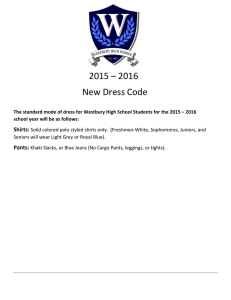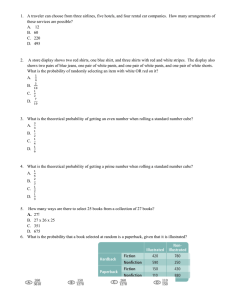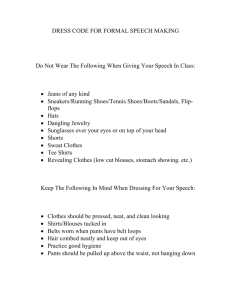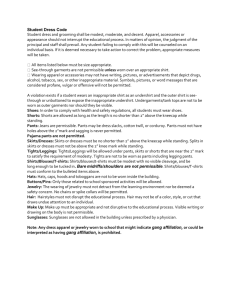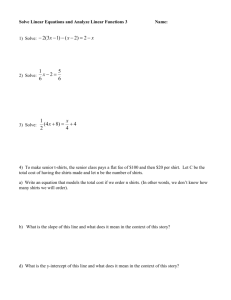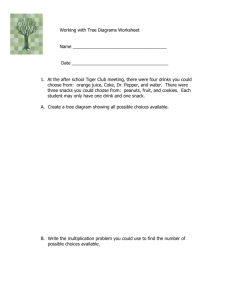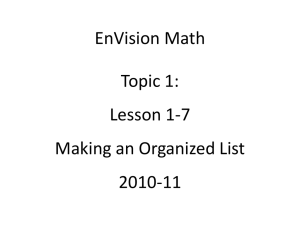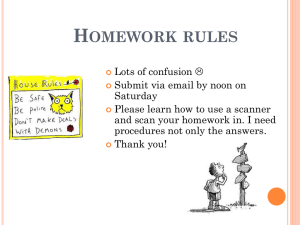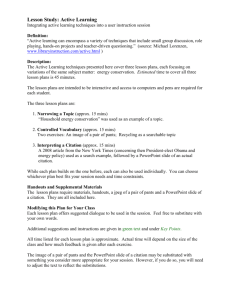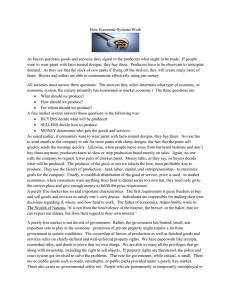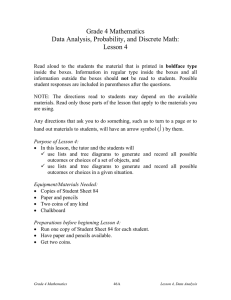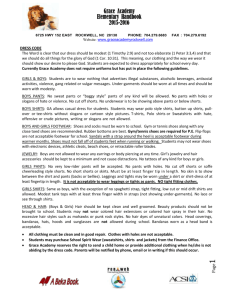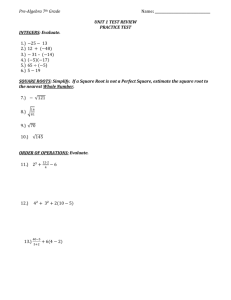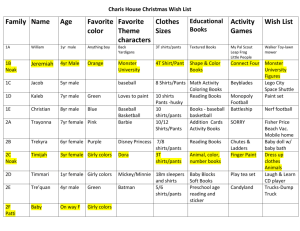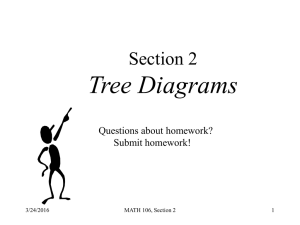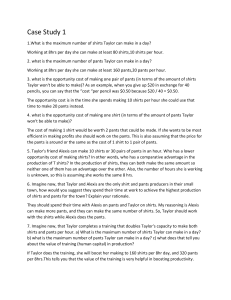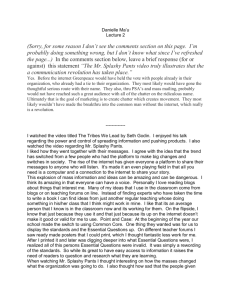Number of Possible Outcomes
advertisement
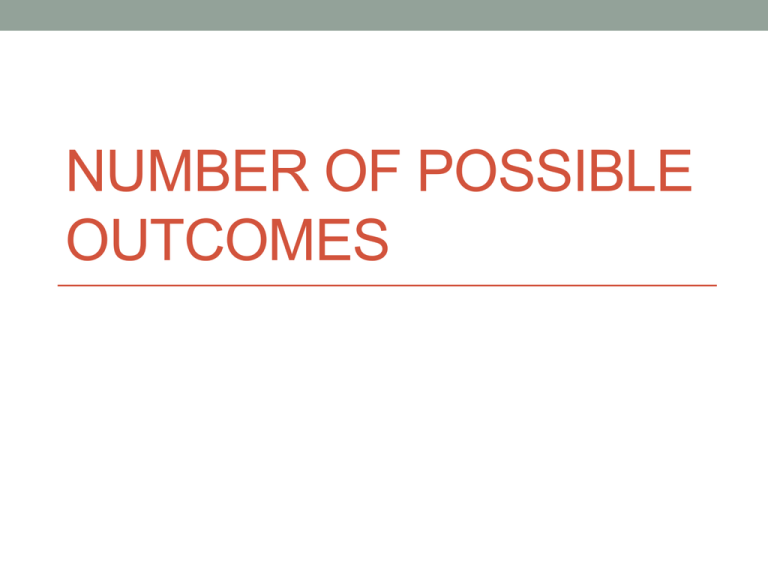
NUMBER OF POSSIBLE OUTCOMES • Probability and Statistics 3.1* Represent all possible outcomes for compound events in an organized way (e.g., tables, grids, tree diagrams) and express the theoretical probability of each outcome. • Objective: Understand and be able to apply the formula for calculating the number of possible outcomes • Learning target: Answer at least 3 of the 4 probability questions correctly on the exit ticket. • What is a tree diagram? • A way to list all the possible outcomes of MULTIPLE events. • Start with a dot, then draw one branch for every outcome of the first event. • From each of those branches, draw a branch for every outcome of the second event, and so on. • I roll a die, then flip a coin. Draw a tree diagram. • Event 1 (rolling a die) has 6 outcomes, so draw 6 branches. • Event 2 (flipping a coin) can be heads or tails. From each of the previous branches, create a heads and a tails branch. This means you will repeat the outcomes multiple times. • I flip a coin, then choose either rock, paper, or scissors. Draw a tree diagram to find the number of possibilities. • Tree diagrams are great for small numbers, but can you imagine the tree diagram for events with 10+ outcomes each? • It would waste a lot of time and writing and it would get too crowded to be able to read • We need to figure out a shortcut for calculating the number of possible outcomes • Notice that the group of 3 appears 2 times? • How many times did the group of 2 appear? • Why did the group appear that many times? • Does it still work if there’s more than 2 events? • Does it still work if there’s more than 2 events? • There are three choices of pants • Mathematical calculation: 3 • Does it still work if there’s more than 2 events? • No matter which pants you chose, you can choose any of the 4 shirts • Mathematical calculation: 3 × 4 • Does it still work if there’s more than 2 events? Yes! • No matter which pants and shirt you chose, you choose either of the 2 shoes • Mathematical calculation: 3 × 4 × 2 = 24 possible outcomes • How do we find the total number of outcomes for multiple events? • I have 8 shirts and 9 ties. I pick one of each. How many possible outcomes? • Multiply together the number of outcomes for each event. • 8×9 = 72 • I pick one of my 5 hats, one of my 3 scarves, and one of my 2 shoes. How many different outfits are possible? • 5×3×2 = 30 Collaborative Station • You must calculate the number of possibilities for each problem. • 1) I have ___ shirts and ___ pants. If I pick one of each, the number of different outfits is ____. • Fill in the first blanks with your own numbers. Then calculate the number that goes in the last blank using our shortcut. • If any of your numbers are 0, use 1 instead. Independent Station • You will continue ST Math’s unit on probability.
